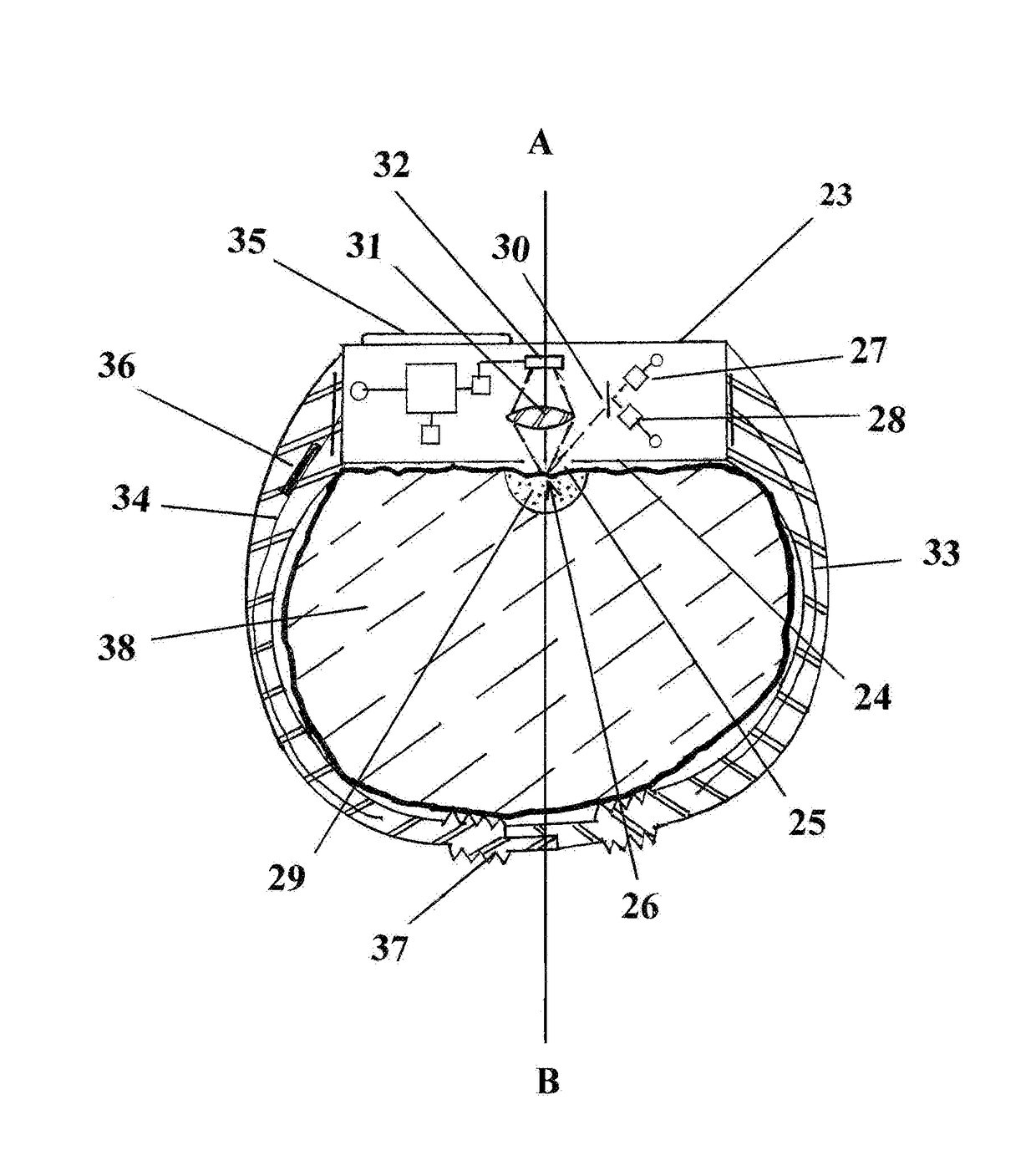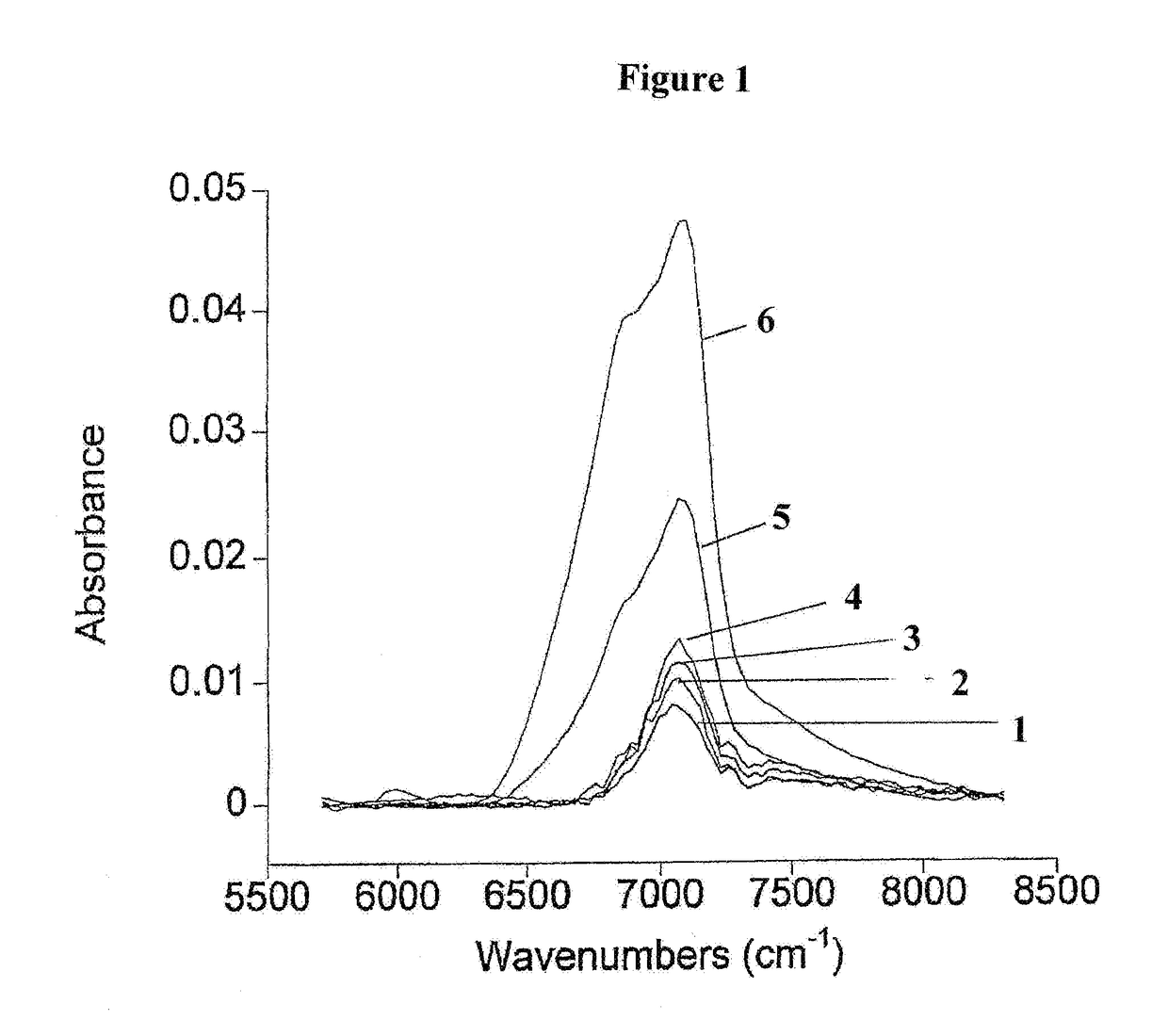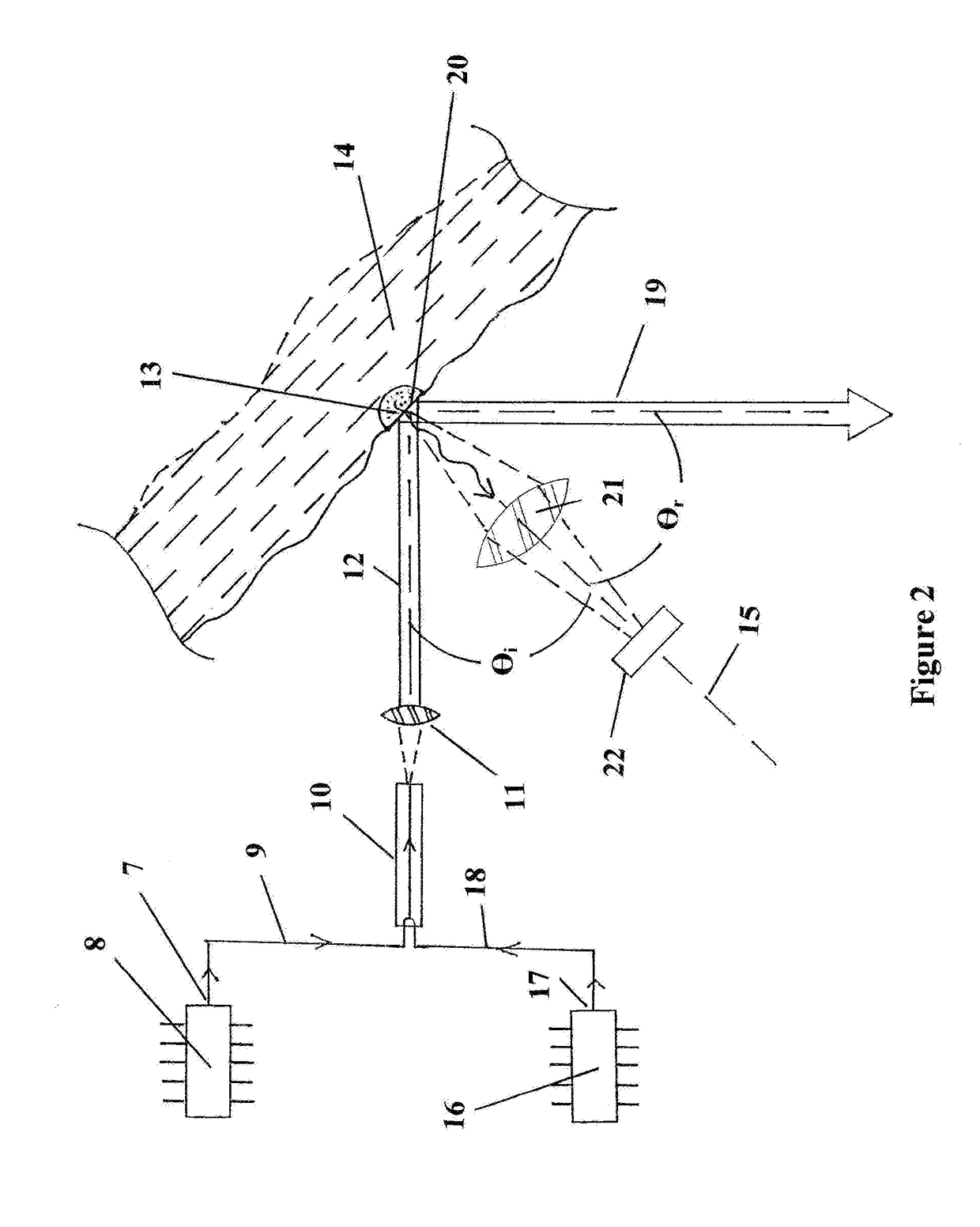Superfast Sequential and Alternate Dual Wavelength Reflection Technique
a dual wavelength reflection and superfast technology, applied in the field of medical instruments, can solve the problems of limited application of such testing, affecting the use of infrared absorption techniques for measuring noninvasively glucose concentration levels in blood, and limiting the application of conventional infrared absorption spectroscopy to physiological glucose concentrations in blood. the effect of reducing the number of infrared absorption techniques
- Summary
- Abstract
- Description
- Claims
- Application Information
AI Technical Summary
Benefits of technology
Problems solved by technology
Method used
Image
Examples
Embodiment Construction
[0011]Glucose in human blood exists as an independent and freely-standing molecule even though it is also attached to almost all proteins of the body. As a matter of fact, it is this fondness for proteins that causes many of the complications of diabetes when the level of freely-standing blood glucose is not well controlled. The glucose molecule is known to be stable or indissociable to excitation by absorption of specific wavelengths of light via its absorption bands. Identification of absorption bands for freely-standing glucose molecules in the near-infrared (NIR) spectral region (˜0.6-1.5 μ) in blood is important because of the relatively low background absorption of water (absorption coefficient −1) in this spectral region versus extremely high background absorption of water (>1,000 cm−1) in the mid- to far-infrared spectral regions.
[0012]Physiologically speaking, glucose exists in blood or body tissues in two forms. The first form is simply a standalone or freely-standing mole...
PUM
 Login to View More
Login to View More Abstract
Description
Claims
Application Information
 Login to View More
Login to View More - R&D
- Intellectual Property
- Life Sciences
- Materials
- Tech Scout
- Unparalleled Data Quality
- Higher Quality Content
- 60% Fewer Hallucinations
Browse by: Latest US Patents, China's latest patents, Technical Efficacy Thesaurus, Application Domain, Technology Topic, Popular Technical Reports.
© 2025 PatSnap. All rights reserved.Legal|Privacy policy|Modern Slavery Act Transparency Statement|Sitemap|About US| Contact US: help@patsnap.com



